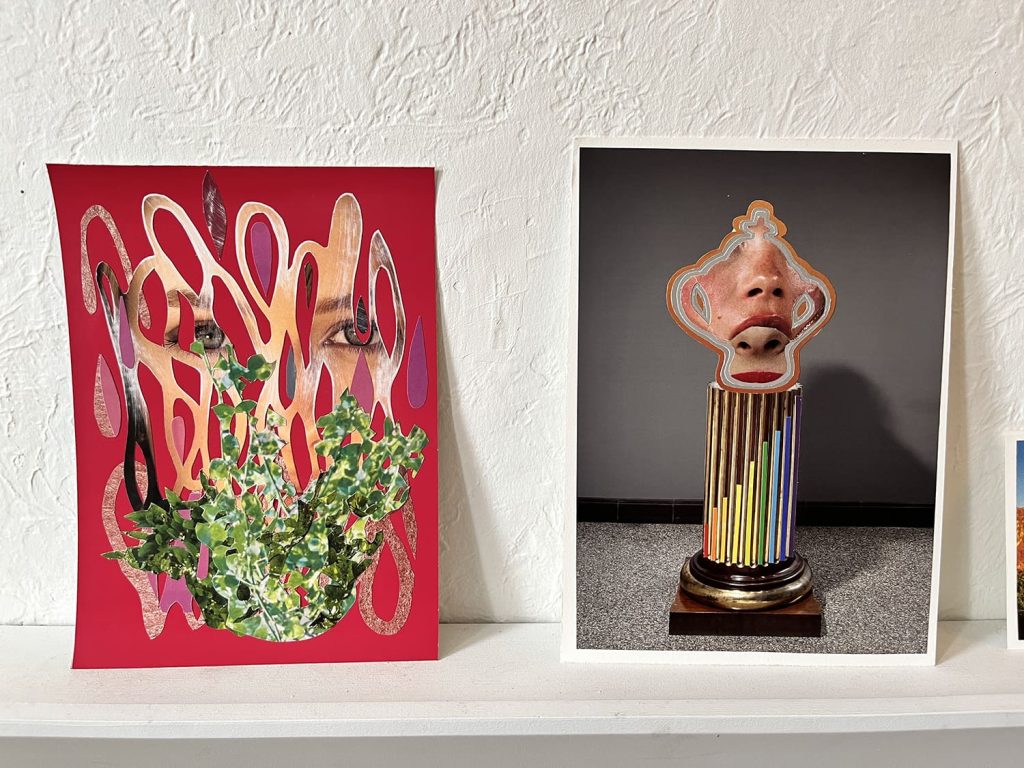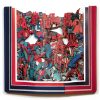Viewing Paul Loughney’s works, we enter a world both mysterious, yet familiar. Symbols, characters, and forms repeat and come together, weaving stories that map realms of interior and external worlds. We visited Paul’s studio in Bay Ridge, Brooklyn to experience these portals in person and learn about their origins.
AB: In your studio, we first looked at two new series that you’ve been working on. Can you share the origins and inspirations behind these new works?
PL: Consequences of Competing Narratives and Spirit Portraits are responses to many events between 2016 until 2023, such as the presidential elections and Covid-19, evolving into two main parts I categorize as the ‘interior world’ and ‘external world.’ I’ve often wondered what consciousness would actually look like in our minds and wanted to create an approximate view, as abstract as that could be.
Maps, diagrams, charts, and schematics, whether esoteric or realistic, have been an interest since I was a kid. I appreciate documents that explain ways to understand and interpret the world. The interior world idea ended up as dark, mysterious, shimmering, pulsating collages “appearing” like a snapshot of an explosion or an implosion. The result is that they look like objects, as they’re mounted on panels. In the other works, the exterior worlds are bright, colorful, topsy-turvy; in many ways unrealistic of the natural world. Indicators of landscape, such as horizon line, sky, foreground, and background are all turned around. Things seem to lose their gravity. The works are inhabited by characters, symbols, and shapes that have evolved in my work over the years and will be explained further.

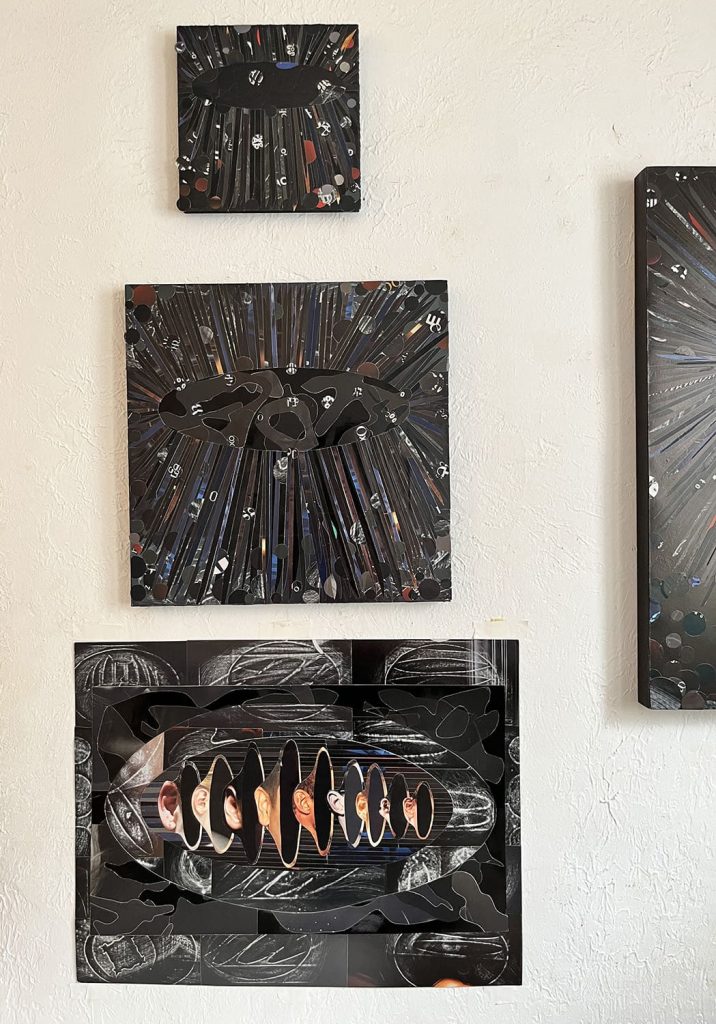
AB: Symbols echo throughout multiple series—the canary silhouette, faces as voids and amplifiers, hands and mouths. How do these emerge and how do they relate to the major themes you explore?
PL: Visual ambiguity has been part of my artistic vocabulary for years. Creating shapes and symbols that are familiar yet unrecognizable creates tension and mystery that is exciting to me. The symbols and shapes emerge because I’m interested in how they can function as a metalanguage to add to any story, and I feel that the process of collage allows me to function as a storyteller, allowing the viewer to fill in any blanks with their imagination.
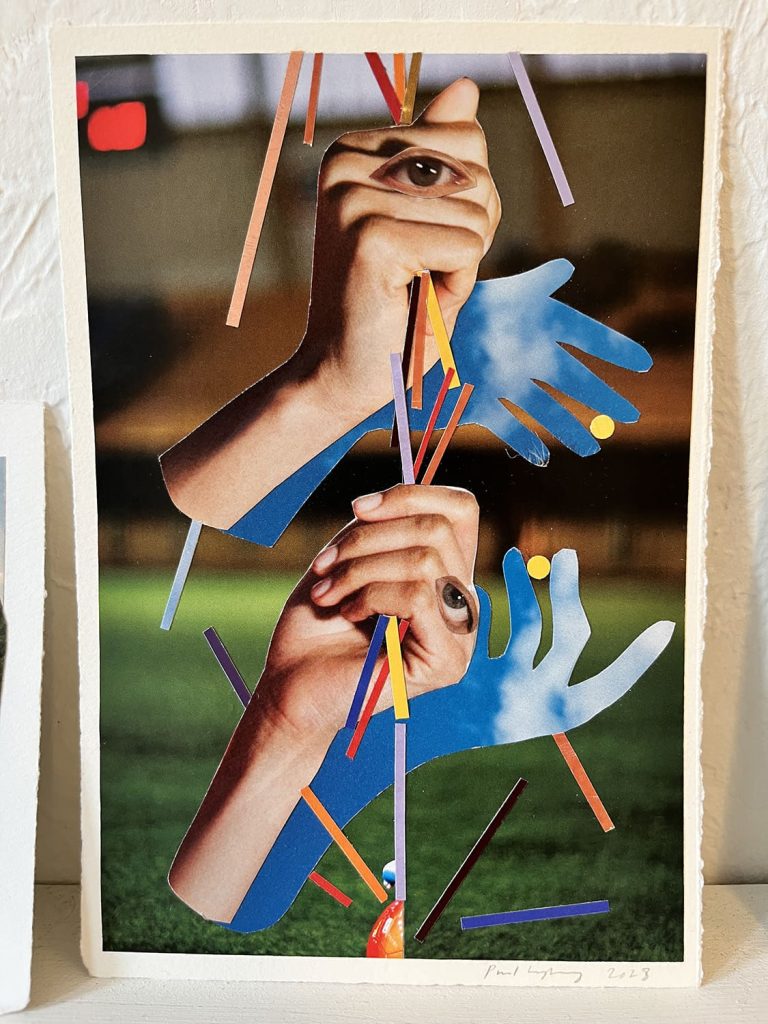
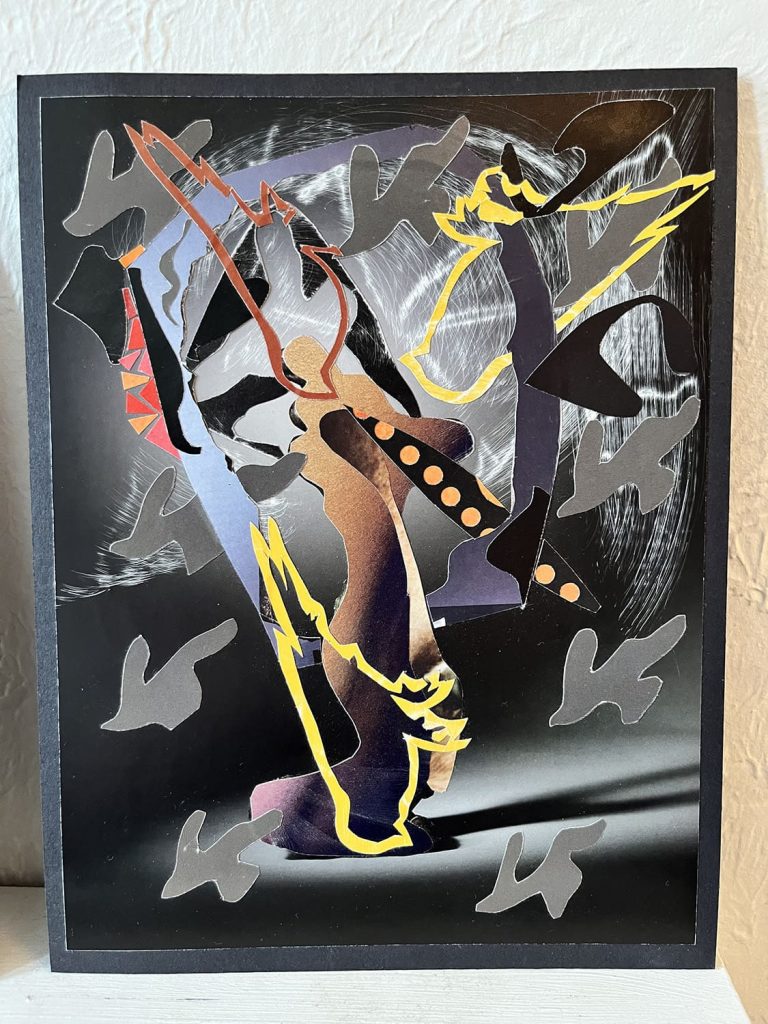
The symbols also emerge from my impatience with hoping that magazines will offer up interesting or uncanny images, so I invent my own. Sometimes making a drawing is the impetus of something new. Other times it’s superimposing images onto other shapes, creating something new. That has been part of my visual vocabulary from the beginning. It’s a type of poetic amalgamation I find very satisfying.
The faces are essentially portraits which I call vessels — heads are shaped into vessels with the identity redacted by a black oval over the face, creating a ‘void’. The resulting shape can be viewed as a container (for receiving) or a speaker (for projecting). The remaining feature is the ear, which represents hearing, one of the most important senses for receiving outside information. We are the vessels. One takeaway from Covid is that we are all consumers to someone, regardless of our beliefs or our backgrounds. So these portraits can be framed as consumers in an unusual landscape. I see the canary silhouette as a harbinger of unforeseen danger. The hands participate as iconography of gestures and symbols in these landscapes — holding, offering, blocking, revealing. They evolved from another smaller series from 2020 and have made an appearance in recent series this year.
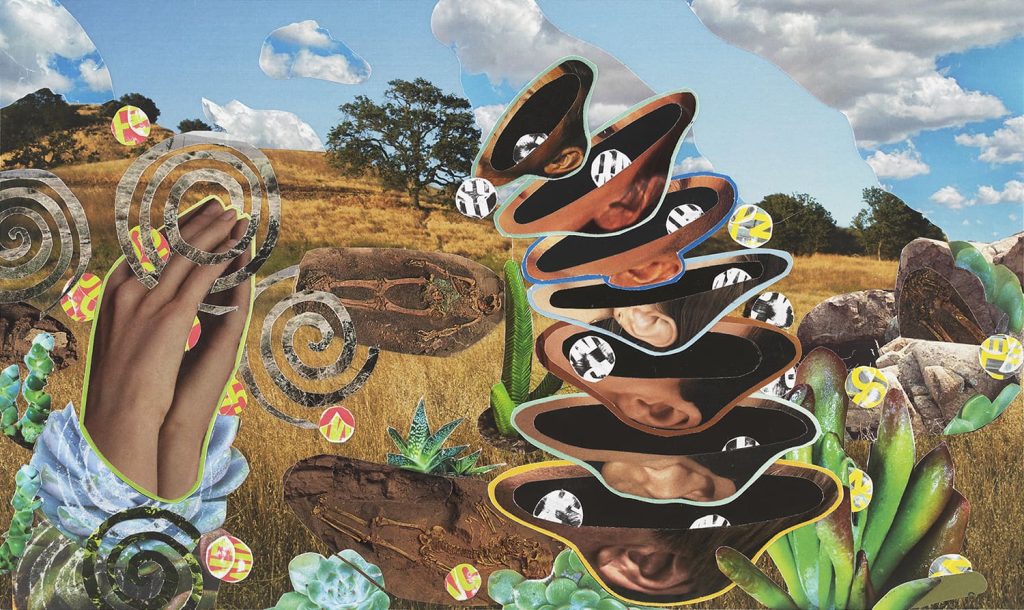
AB: Abstract shapes also repeat in many works—looping, energetic lines, spirals, shapes of camouflage patterning. Silhouettes of forms that seem vaguely familiar, while the imagery, patterns, and colors confuse our perfection also reappear. How do you utilize abstraction and surrealism within the visual language you create?
PL: When making shapes, it’s an approach from abstraction more than surrealism. It’s a conscious choice to play with spirals, cages, labyrinths, and camouflage as elements on a picture plane. These can function as patterns, but also as symbols, especially when superimposed on other images. I often think about how ambiguity plays a role with these shapes, but also the historical or psychological role some of them inhabit. The edges of the shapes can be as important as the whole.
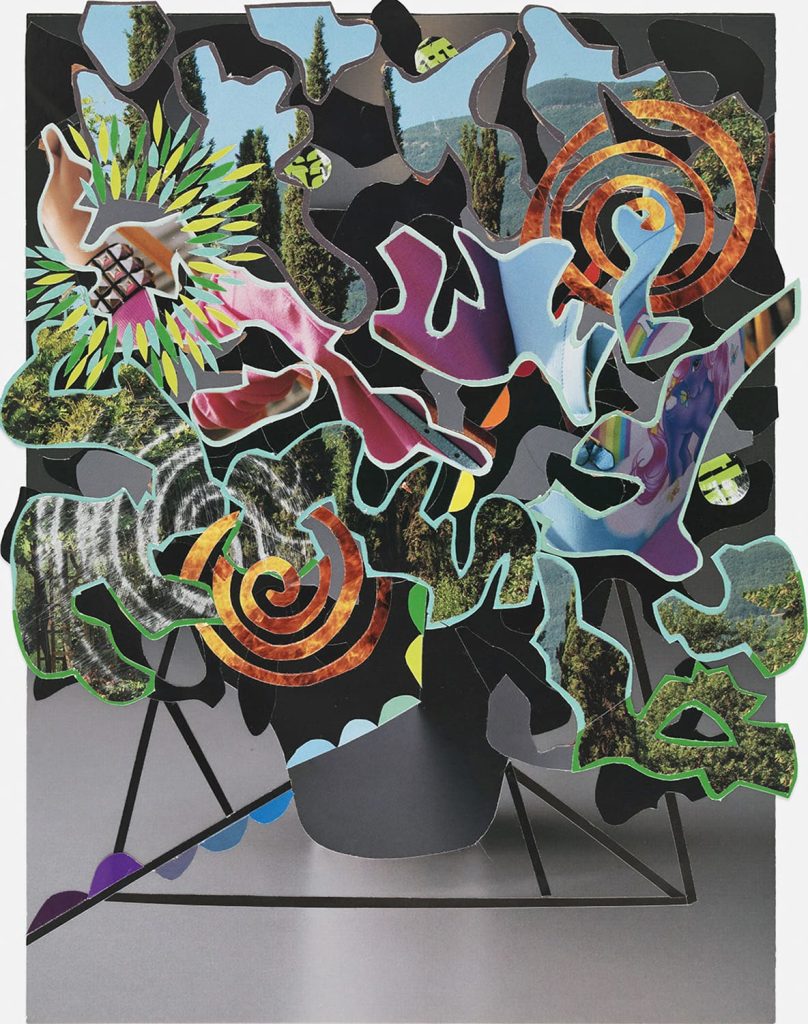
I understand that the combination of certain elements produces a surreal effect as they seem incompatible and incongruous and dream-like. Truth be told, I’ve been in love with certain Surrealist works since I was a teenager, for example, Ernst, Magritte, and, Hoch. In the end, I like to make work that rewards slow looking, and I aim to be respectful of my viewer’s imagination.
I tend to categorize the abstract shapes as secondary symbols, where the head vessels, hands, text spheres, and silhouettes of canaries are considered primary. They all play well together in compositions. The camouflage patterns are separated, isolated, and recontextualized. I incorporate the individual camouflage shapes as a metaphor for undisclosed parts of our identities.
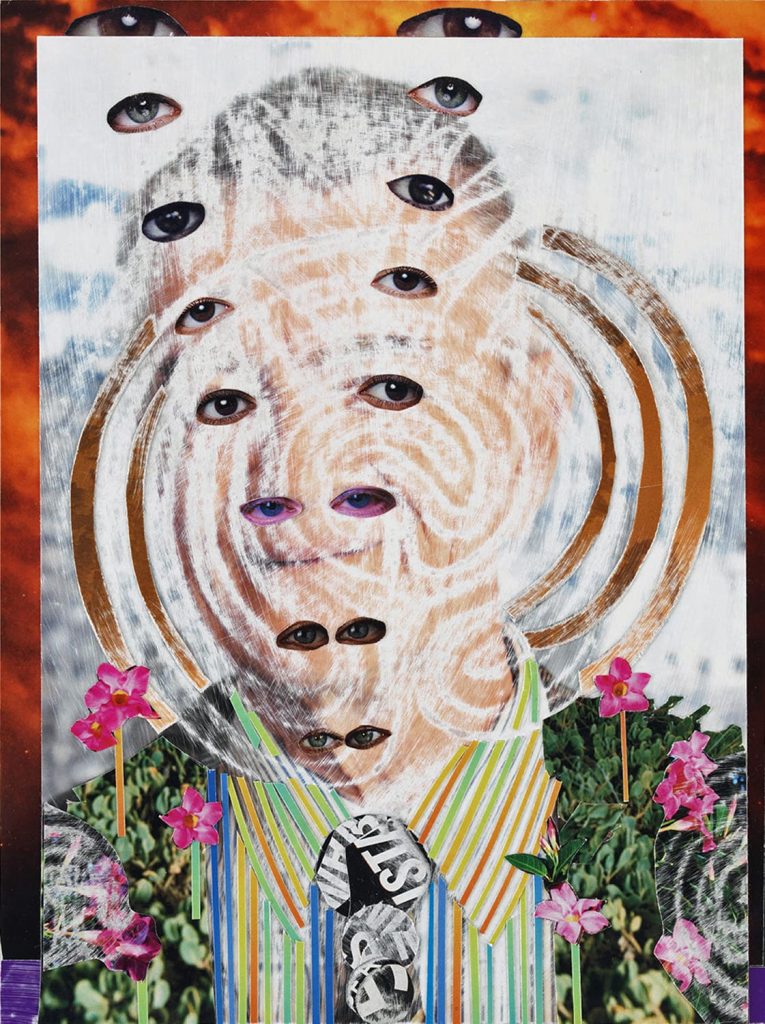
AB: Has working on these new series simultaneously impacted your process?
PL: I’m always working on something and can be quite prolific. If it’s not multiple works at the same time, it’s going back and forth between series. So it’s not that a new series has impacted my process, it’s more about efficient time management between a day job and parenting a teenage son that has affected my work process in unexpected ways. Once I realized that my work can develop from a variety of stages, I could focus on one or more given what the time allows.
One example is culling magazines and placing them into labeled folders. Another is making collages in ‘modules’ — making head vessels and text spheres, cutting out complicated shapes, sometimes just focused on this production. The actual ‘composing’ takes place in a deep flow — a space where I need to be as distraction-free as possible. That can last for several hours and be blissful.
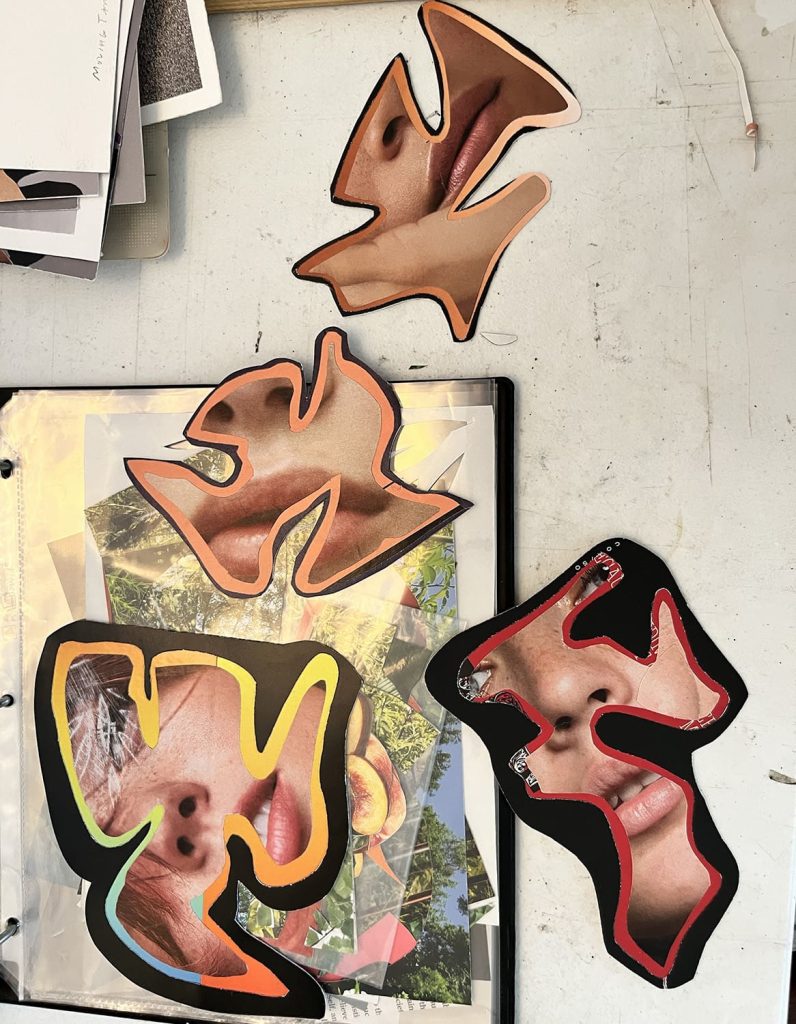
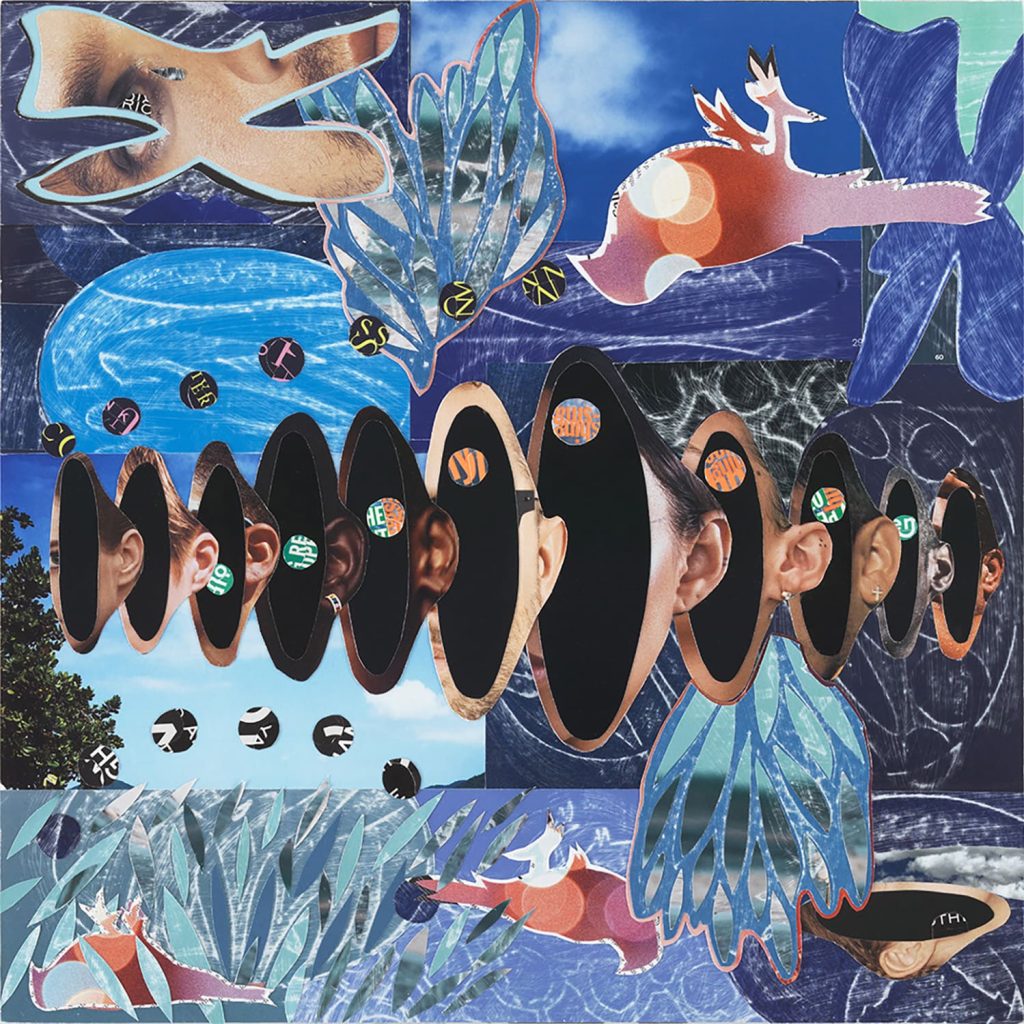
AB: Using sleek, high-end photography as source material, you capitalize on all it offers in terms of color, reflective surface, and depth created by light and shadow, but you also interject a sense of chaos and disruption within these spaces. How do you select the materials that you use and how do you transform them?
PL: I believe it was Richard Serra who said you’re only as good as the obscurity of your sources and I identify with that deeply. As mentioned, there are some magazines I will use and some I never will, as they are more easily identifiable. Years ago I decided to no longer purchase source materials like magazines as I believe the universe is an abundant place, and almost all of them have come to me through friends and finding.
Chance is part of the selection process, never knowing what I’m going to find, and sometimes it influences the work in new ways. Finding similarities in images to keep a body of work cohesive could be a challenge, but it has not been the case, and I find that interesting. I approach magazines as if they are an ‘anthropological document’ and will excavate bodies, forms, shapes, and symbols out of them. There is a large range of things I seek out and each page can have more than one option.

AB: How do you organize your materials? PL: I organize images in folders that are categorized by theme. Once adhesive material is placed on them then they tend to migrate into plastic sleeves and are added into binders. The binders live on shelves, labeled on the outside for clarity. Larger pieces will live in a large folder in the flat file for a future time. My living room doubles as a studio and I need to be extremely efficient in keeping materials organized.
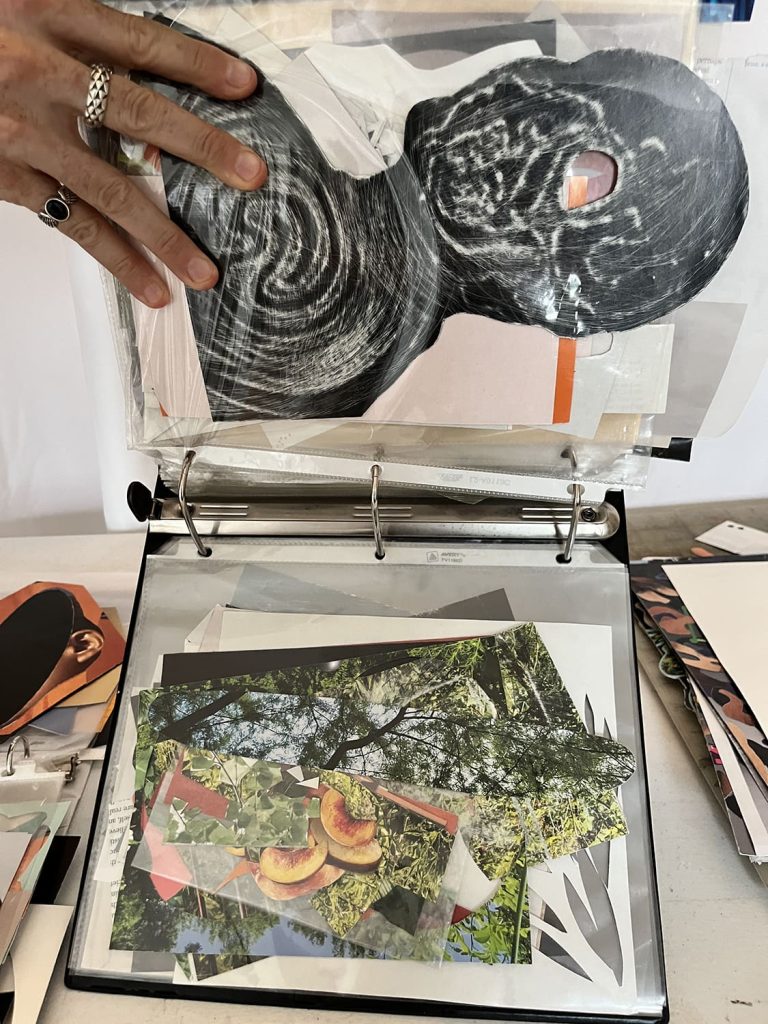
AB: What are you working on next? PL: I have an upcoming solo show at the Betsy Hotel on South Beach, Miami opening on Friday, December 8th during Art Basel week. For folks who haven’t visited, The Betsy is a preeminent Arts Hotel that’s right downtown near all the fairs. The show will be up for an entire year which is super exciting for me as the work will get a huge amount of visibility during that time. Right now, I’m focusing on producing larger works around 2’ x 2’ and most of this work will be mounted on panels. The new pieces look fantastic and I’m looking forward to sharing images soon.



